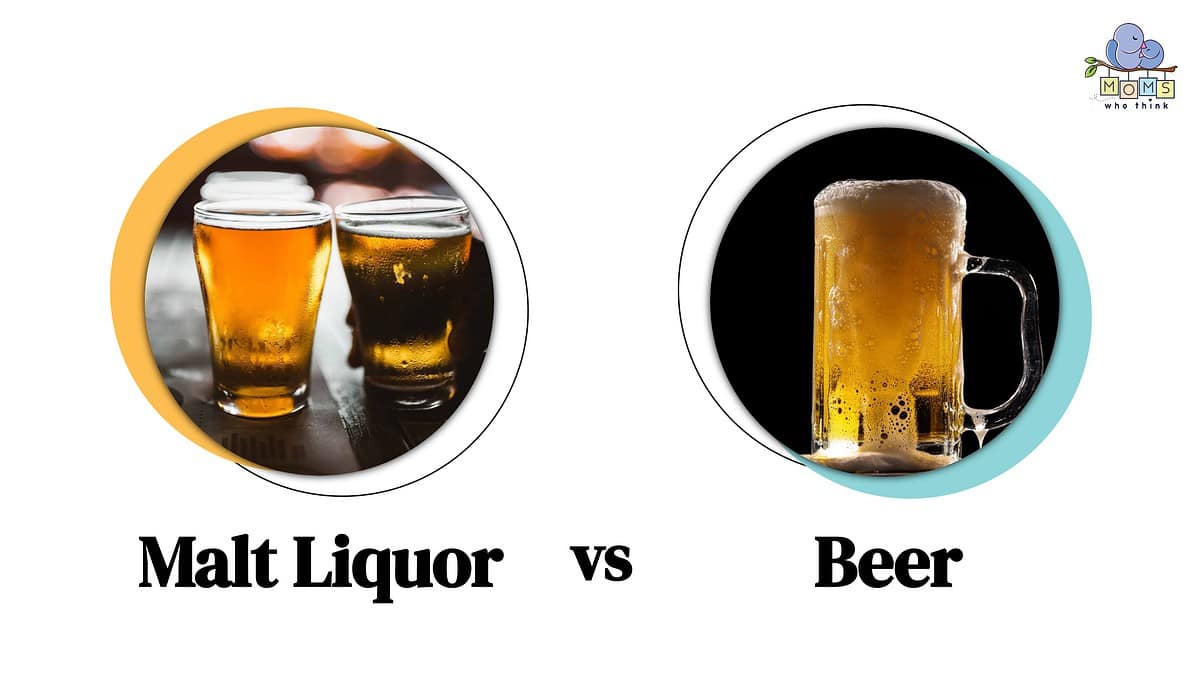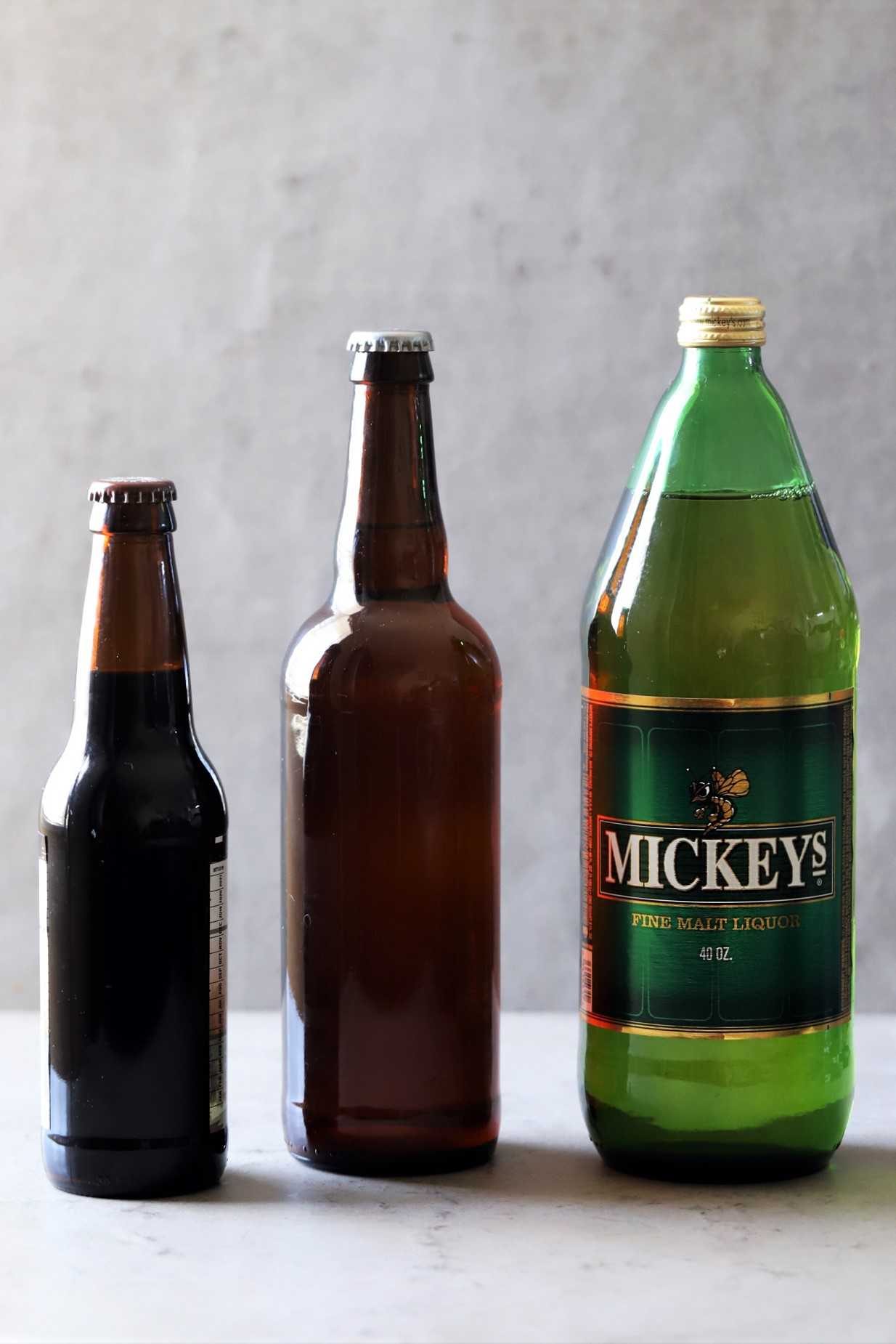Malt Liquor Vs Beer: Understanding The Brewing Differences

When it comes to understanding the brewing differences between malt liquor and beer, there are a few key factors to consider. Malt liquor, a type of beer brewed with extra malt and sugar, typically has a higher alcohol content compared to regular beer. It is darker in color, sweeter in taste, and less carbonated. On the other hand, beer is brewed with hops and barley, resulting in a lower alcohol content. By understanding these variations in ingredients and brewing processes, consumers can make informed choices about their preferred beverage.
Introduction
Malt liquor and beer are both popular alcoholic beverages, but they have distinct characteristics that set them apart. Understanding the brewing differences between malt liquor and beer can help consumers make informed choices about their preferred beverage. Malt liquor is known for its higher alcohol content, darker color, sweeter taste, and lower carbonation compared to beer. On the other hand, beer is brewed with hops and barley, resulting in a lower alcohol content and a more varied range of flavors. By delving into the ingredients used and the brewing processes involved, one can gain a better understanding of the unique attributes of malt liquor and beer.
Key Differences Between Malt Liquor And Beer
Malt liquor and beer have distinct characteristics that differentiate them from each other. The key differences between malt liquor and beer include their ingredients, alcohol content, flavor profiles, and brewing processes. Malt liquor is brewed from a combination of malted barley and corn, while beer is brewed solely from malted barley. Malt liquor typically has a higher alcohol content, ranging from 6% to 12% ABV, compared to the lower alcohol content of beer, which typically ranges from 4% to 7% ABV. Additionally, malt liquor tends to have a sweeter taste and darker color, while beer offers a more varied range of flavors. These variations in ingredients, alcohol content, and taste contribute to the distinct qualities of malt liquor and beer.
Ingredients Used In Malt Liquor And Beer Production

Malt liquor and beer are produced using different ingredients. Malt liquor contains a combination of malted barley and corn, which contributes to its distinctive flavor and higher alcohol content. The addition of corn helps to increase the fermentable sugars and boost the alcohol levels. On the other hand, beer is brewed solely with malted barley, water, hops, and yeast. The use of hops in beer brings a bitterness and aroma to the final product. The choice of ingredients plays a significant role in the taste and characteristics of both malt liquor and beer.
Malt Liquor Ingredients
Malt liquor is made using a combination of malted barley and corn, which contributes to its distinct flavor and higher alcohol content. The addition of corn helps to increase the fermentable sugars, resulting in a sweeter taste. Malted barley, specifically six-row barley, is used in malt liquor production, which has a higher protein content compared to the two-row barley commonly used in beer. This combination of ingredients gives malt liquor its characteristic sweetness and thicker consistency.
Beer Ingredients
Beer is primarily brewed using four main ingredients: malted barley, hops, water, and yeast. Malted barley serves as the base ingredient and provides the fermentable sugars needed for the yeast to convert into alcohol. Hops are added to balance the sweetness of the malt and provide bitterness and aroma to the beer. Water is an essential component, accounting for the majority of the beer’s composition. Yeast plays a crucial role in the fermentation process, converting the sugars into alcohol and carbon dioxide. Additional ingredients like fruit, spices, and other grains can be used to create different beer styles and flavors.
Brewing Process Variation

The brewing process for malt liquor and beer differs in several key aspects. Malt liquor is typically brewed using a longer and more intense fermentation process, resulting in a higher alcohol content. Additionally, malt liquors often undergo a process called “lagering,” where the beer is left to mature at cold temperatures for an extended period. This process helps to smooth out the flavors and enhance the malt character. In contrast, the brewing process for beer can vary depending on the style, but it generally involves shorter fermentation times and different temperature requirements. The variation in brewing processes contributes to the distinct flavors and characteristics of malt liquor and beer.
Malt Liquor Brewing Process
The brewing process for malt liquor involves a series of steps that are similar to those used in brewing beer. It begins with milling and mashing the grains, typically a mixture of malted barley and corn, in hot water. The mixture is then boiled and hops are added for flavor and aroma. After boiling, the liquid is cooled and yeast is added to start fermentation. Malt liquor undergoes a longer fermentation process compared to beer, often taking several weeks. The final step is conditioning, where the beer is aged at cold temperatures to enhance its flavors and smoothness.
Beer Brewing Process
The beer brewing process involves a series of steps that transform grains, typically barley, into the beloved beverage. It begins with milling the grains to break them down and expose their starches. The grains are then mixed with hot water in a process called mashing, which activates enzymes to convert starches into fermentable sugars. After mashing, the liquid, known as wort, is separated from the grain husks. The wort is then boiled and hops are added for flavor and aroma. Once the wort is cooled, yeast is introduced to start fermentation, where sugars are converted into alcohol and carbon dioxide. The fermented beer is then conditioned, packaged, and ready to be enjoyed.
Flavor Profiles And Alcohol Content Variation

In terms of flavor profiles, malt liquor and beer differ significantly. Malt liquor often has a sweeter and heavier taste compared to beer, with a more pronounced malt character. On the other hand, beer can range from light and crisp to dark and robust, offering a wider variety of flavors.
Additionally, alcohol content varies between malt liquor and beer. Malt liquor typically has a higher alcohol content, ranging from 7% to 12% ABV, whereas beer usually has a lower alcohol content, typically between 4% and 7% ABV.
These variations in flavor and alcohol content provide consumers with diverse options to suit their taste preferences and desired drinking experience.
Malt Liquor Flavor And Alcohol Content
Malt liquor is known for its unique flavor profile and higher alcohol content compared to beer. The flavor of malt liquor is often described as sweeter and heavier, with a pronounced malt character. This is due to the use of more malted grains during the brewing process. In terms of alcohol content, malt liquor typically has a higher ABV (alcohol by volume), ranging from 7% to 12%. This higher alcohol content contributes to its stronger and more intoxicating effects. Malt liquor offers a bolder and more robust drinking experience for those looking for a stronger beverage.
Beer Flavor And Alcohol Content
Beer comes in a wide range of flavors and aromas, making it a versatile beverage enjoyed by many. The flavor of beer can vary depending on the style, ingredients, and brewing techniques used. Some beers have a light, crisp taste, while others are more robust and full-bodied. The alcohol content of beer also varies, with most traditional beer styles ranging from 4% to 7% ABV (alcohol by volume). However, there are also stronger craft beers and specialty beers that can have an ABV of 7% or higher. It’s important to note that individuals should always drink responsibly and be aware of the alcohol content when consuming beer.
Cultural Significance And Popular Brands

Beer has a rich cultural significance in many countries, often associated with social gatherings, festivals, and celebrations. In Germany, beer is an integral part of their national identity, with Oktoberfest being a world-renowned event. In Belgium, beer is considered a cultural heritage and is produced with traditional methods passed down through generations. Popular beer brands that have gained global recognition include Budweiser, Heineken, Guinness, and Corona. These brands have not only become a symbol of quality and craftsmanship but have also played a role in promoting beer as a cultural symbol worldwide.
Cultural Perceptions And Consumption
Cultural perceptions and consumption play a significant role in how malt liquor and beer are perceived and enjoyed. In many cultures, beer has a long-standing tradition and is seen as a social drink to be enjoyed with friends or during festive gatherings. It is often associated with relaxation, celebration, and leisure activities. Malt liquor, on the other hand, has been historically associated with certain demographics and has often faced negative stereotypes. However, it is important to note that these perceptions can vary across different cultures and individuals. The marketing and branding strategies used by different breweries also play a role in shaping these cultural perceptions and influencing consumer preferences.
Notable Malt Liquor And Beer Brands
There are several notable malt liquor and beer brands that have gained popularity in the market. Some well-known malt liquor brands include Colt 45, Saint Ides, and Olde English 800. These brands have established a strong presence among consumers seeking a higher ABV and bold flavors. On the other hand, when it comes to beer, popular brands such as Budweiser, Corona, and Heineken dominate the market. These brands are known for their refreshing taste and wide range of beer styles. Each brand has its own unique characteristics and loyal fan base, contributing to the diverse range of options available for consumers.
Conclusion

In conclusion, understanding the brewing differences between malt liquor and beer is essential for enthusiasts and consumers alike. While both beverages are brewed using barley, malt liquor incorporates corn as well, resulting in a distinct flavor profile. Additionally, malt liquor often boasts a higher alcohol by volume (ABV) compared to beer, providing a more potent and robust drinking experience. Cultural preferences and brand loyalty play a significant role in the consumption and popularity of these beverages. Whether you prefer the boldness of malt liquor or the refreshing taste of beer, knowing the distinctions allows you to make an informed choice when it comes to your beverage of choice.
Recap Of Differences And Choose The Right Brew
In summary, the brewing differences between malt liquor and beer are evident in their ingredients, brewing processes, flavor profiles, and cultural significance. Malt liquor is brewed with extra malt and sugar, resulting in a higher alcohol content and a sweeter taste, while beer is brewed with hops and barley and generally has a lower alcohol content. To choose the right brew, consider your preferences for flavor, carbonation, and strength. Whether you enjoy the boldness of malt liquor or the refreshing taste of beer, understanding these differences will help you make an informed decision when selecting your beverage of choice.
FAQ About Malt Liquor Vs Beer: Understanding The Brewing Differences
Q: What is the main difference between malt liquor and beer?
A: The main difference lies in the brewing process and alcohol content. Malt liquor typically has a higher alcohol content due to the addition of adjuncts like corn or rice during brewing.
Q: Are there any differences in ingredients used in brewing malt liquor compared to beer?
A: Yes, malt liquor often contains cheaper fermentable sugars like corn or rice, whereas beer typically relies on malted barley as the primary fermentable sugar.
Q: How does the taste of malt liquor differ from beer?
A: Malt liquor is often sweeter and has a more pronounced alcohol taste compared to traditional beers. It may also have a thicker mouthfeel due to the higher residual sugars.
Q: Are there any legal distinctions between malt liquor and beer?
A: In the United States, malt liquor is regulated based on its alcohol by volume (ABV), with some states requiring different labeling or licensing for beverages above a certain ABV threshold.
Q: Can both malt liquor and beer be enjoyed in moderation?
A: Yes, like any alcoholic beverage, both malt liquor and beer can be enjoyed responsibly in moderation. It’s important to be aware of the alcohol content and drink sensibly.

A local, family-owned fast food and ice-cream diner in Wind Lake, Wisconsin. We might be small, but we are big on fast-friendly service with everything cooked to order. B-Lazy Diner offers chicken and fish fry buckets, served up with French fries and our famous homemade coleslaw and tarter sauce, along with a variety of wraps, seasoned burgers, homemade soups, and, of course, ice cream cones, sundaes, malts, and shakes.